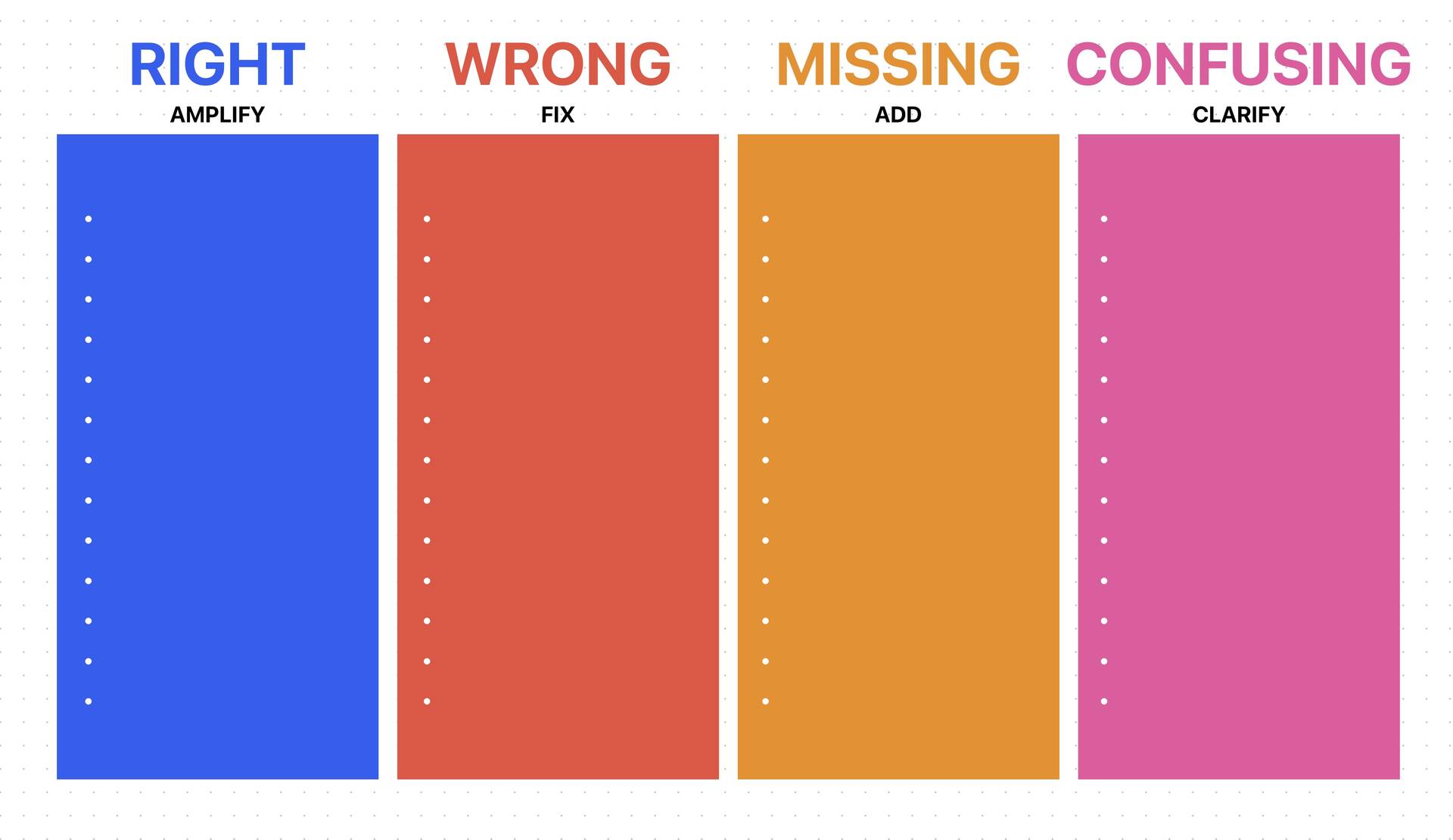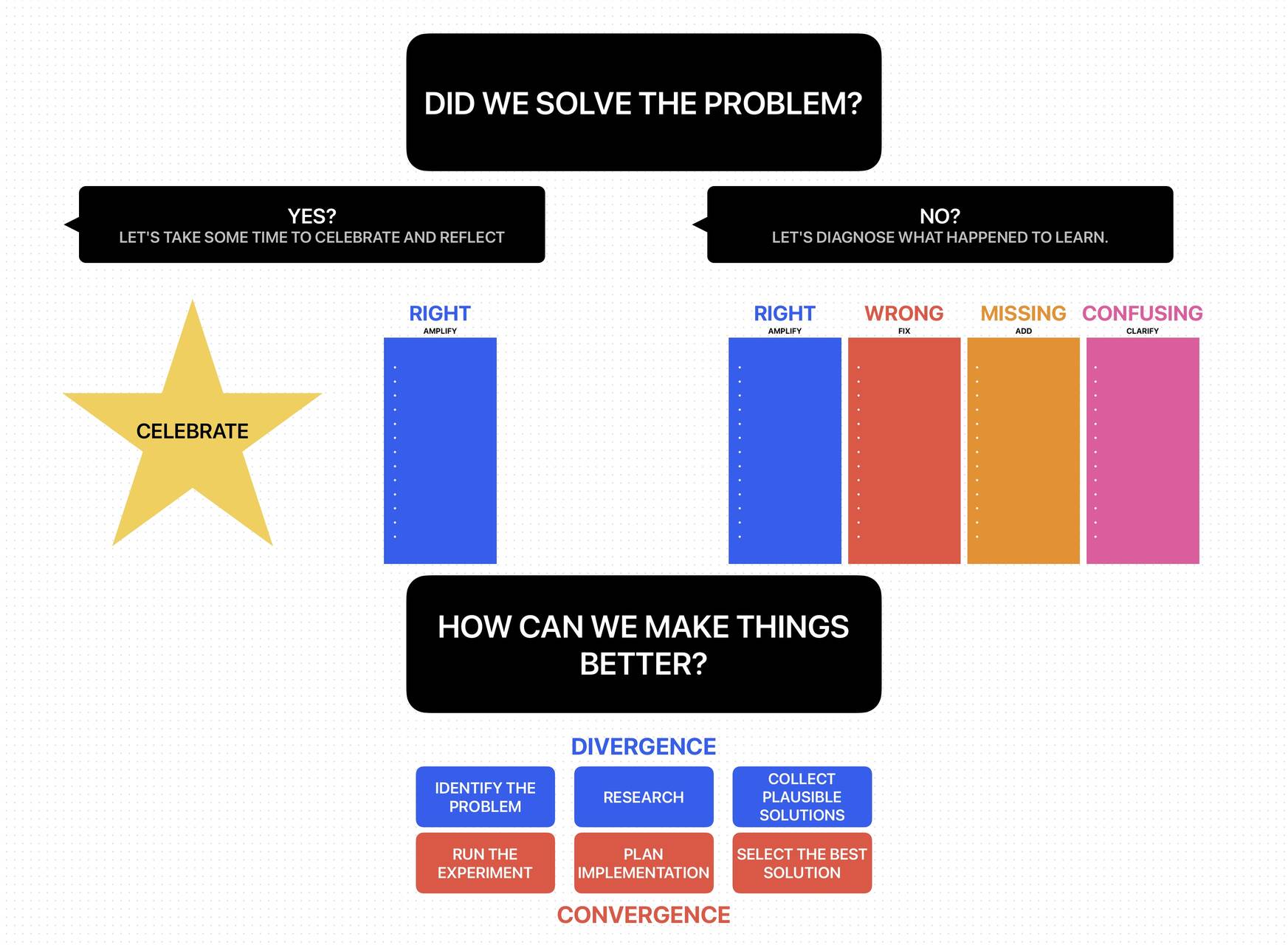WHY IT MATTERS: If you don't know why it's working when it's working, you won't know how to fix it when it breaks.
The final step of the innovation process is to examine the results and learn from them.
DIVERGENCE
- IDENTIFY THE PROBLEM. What problem are we trying to solve? What are the root causes?
- RESEARCH. Who do we know or who can we study that has solved a similar problem?
- COLLECT PLAUSIBLE SOLUTIONS. What are all the things we could do?
CONVERGENCE
- SELECT THE BEST SOLUTION. Out of everything we could do which one’s the best option?
- PLAN IMPLEMENTATION. How will we pull this off? How will we track if it worked?
- RUN THE EXPERIMENT. We put the idea into action, and track the data to see if it worked.
- EXAMINE THE RESULTS. Have we solved the problem? If not, what’s the problem?
DID WE SOLVE THE PROBLEM?
DID WE SOLVE THE PROBLEM? YES!
LET’S TAKE SOME TIME TO CELEBRATE AND REFLECT
CELEBRATE: in a meaningful way by finding the best way for you and your team to feel rewarded for a job well done. Here is a list of different types of reward systems to choose from.
- PHYSICALLY: Do a victory lap.
- EMOTIONAL: Write a short entry in your journal.
- SOCIAL: Send a celebratory text to your accountability partner.
- INSPIRATIONAL: Play an audio file of a roaring crowd.
- PHYSIOLOGICAL: Eat a small treat.
- PSYCHOLOGICAL: Cross off the last day on the habit tracker you’ve been using
REFLECT: This experiment was successful. We were able to solve the problem. Now, let's analyze the lessons we learned from this experiment so that we can apply them to future ones.
- What went Right? that we can amplify next time we do an experiment?
DID WE SOLVE THE PROBLEM? NO.
LET’S DIAGNOSE WHAT HAPPENED TO LEARN
We are information scientists attempting to solve a problem. In our pursuit, we either win or we learn. Since our hypothesis was not correct, let's take this opportunity to learn what we can do differently now.
THE FOUR HELPFUL LISTS: We're diagnosing lessons learned from previous experiments to inform future ones.
- What went Right? that we can amplify next time
- What went Wrong? that we can fix next time
- What was Missing? that we need to add next time
- What was Confusing? that we should clarify next time
AND THEN, THE PROCESS BEGINS AGAIN
One of the pivotal roles of a leader is to define focus and alignment.
- Focus = our short-term priorities. What we’re executing on today.
- Alignment = how what we’re focusing on brings us to our long-term aspirations.
Once we have finished an experiment, we need to go back to the drawing board and determine what our next experiment should be.
We will ask ourselves, "What is the next right thing to focus on in the short-term that will align us with where we want to be long-term?”
See you tomorrow,
Hunter


